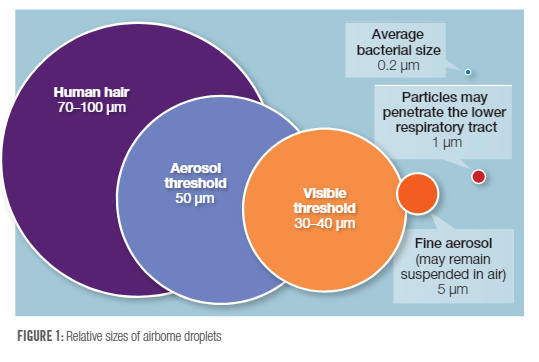It can be hard to know where to look for the latest information – the CDC has been cautious to confirm the spread of COVID-19 as airborne. We’ve started a post that we’ll continue to update with the latest information as it relates to dental aerosol control.
1. CDC Confirms COVID-19 is airborne and spread by expelled breath.


We’ve suspected it and became obsessed with infection controls and aerosol research ever since. It’s been obvious to us for a while now. Finally, now they have confirmed it – it raises even more questions and implications. One thing is clear however:
The breath of patients is now a crucial factor in infection control.
2. Latest CDC estimates are 40% of COVID infected are asymptomatic – pre-screening will not work.


‘I’ve been dealing with viral outbreaks for the last 40 years. I’ve never seen a single virus — that is, one pathogen — have a range where 20% to 40% of the people have no symptoms.’
— Dr. Anthony Fauci, National Institute of Allergy and Infectious Diseases
Whether you like Dr Fauci or not, it seems that one of the main reasons COVID has spread is because many are infectious without knowing it. If they have no symptoms and are infectious – your pre-screening process will not work, which then leaves you relying on your PPE.
3. PPE and masks are not effective and are listed as the least effective control by the CDC.
While a controversial topic to some – it would be safe to say that face masks do reduce the number of larger moister particles expelled when someone speaks.


“In the healthcare setting, aerosol is used with respect to “aerosol-generating procedures” (e.g., intubation, bronchoscopy) that produce small droplets and particles and require distinct engineering controls to prevent occupational transmission of infectious pathogens like SARS-CoV-2.” – CDC Scientific Brief
This decision means that aerosol generating procedures should only be performed with Engineering Controls in place, not just PPE controls, like masks.{% video_player “embed_player” overrideable=False, type=’scriptV4′, hide_playlist=True, viral_sharing=False, embed_button=False, autoplay=False, hidden_controls=False, loop=False, muted=False, full_width=False, width=’3840′, height=’2160′, player_id=’35818972460′, style=” %}
Do you still feel safe when you can clearly see the airflow and movements (above video) of your patient talking with a mask on? Certainly makes you think twice doesn’t it.
4. HVE alone isn’t enough.
The general consensus when it comes to HVE is that it is effective at capturing aerosols and particles from the working area. What they don’t take into account is that most patients breathe out their noses while getting dental treatment as the video shows.
Just think of the consequences if you, your staff or one of your patients contracted COVID in your dental practice. The lost income of a shut down is bad enough, but the long-term damage to your businesses’ reputation is another.
If you’re considering source capture, you need to act now to secure your own Rhondair – the highest volume of airflow and quietest operation available. By combining the Rhondair, HVE and your other infection protocols, you can get an edge over your competition, make your patients feel safer and have peace of mind that you are doing what you can to keep yourself, your office staff and your patients safe.

